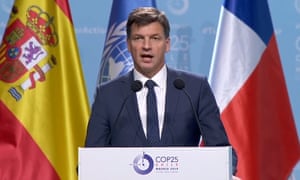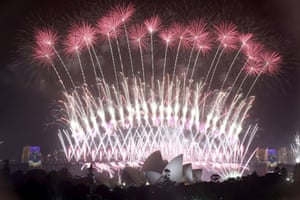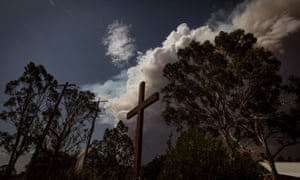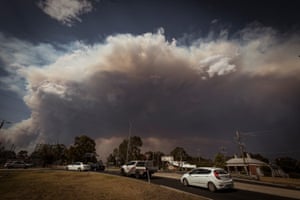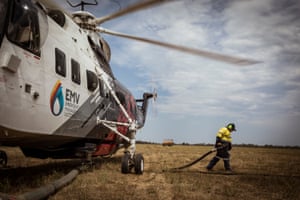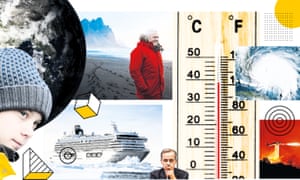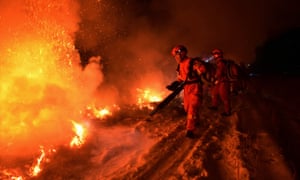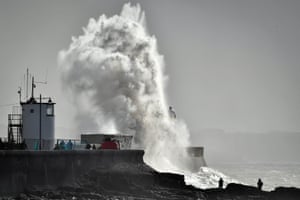On a day of extraordinary bushfires the energy minister argued that
the country has ‘strong targets, clear plans and an enviable track
record’ on reducing emissions. Is he right?
Australians should be proud of the country’s achievements on climate change, energy minister Angus Taylor
has argued in a newspaper column that claims “quiet Australians” don’t
accept the “shrill cries” of the government’s climate critics.
The column, published in The Australian, makes a series of claims about Australia’s emissions and how they compare to other countries, as well as highlighting exports such as LNG that are “dramatically reducing emissions” in other countries.
So is Australia really a paragon of climate virtue – cutting emissions at home while helping the world to cut emissions?
As is always the case when it comes to climate and energy policy, there is much to check and understand in Taylor’s article.The column, published in The Australian, makes a series of claims about Australia’s emissions and how they compare to other countries, as well as highlighting exports such as LNG that are “dramatically reducing emissions” in other countries.
So is Australia really a paragon of climate virtue – cutting emissions at home while helping the world to cut emissions?
Prof Frank Jotzo, director of the Centre for Climate and Energy Policy at the ANU Crawford School of Public Policy, told Guardian Australia: “I would characterise [Taylor’s article] as a selective use of statistics that make Australia’s emissions trajectory look good, when in reality it does not look good at all.”
Tiny footprint?
Taylor writes that Australia is “responsible for only 1.3 per cent of global emissions, so we can’t single-handedly have a meaningful impact without the co-operation of the largest emitters such as China and the US.”In the context of global emissions, there is much that Australia can, and does, do that has a meaningful impact.
The 1.3% figure does not account for Australia’s contribution to global emissions from the fossil fuels we dig up and export.
If this exported coal and gas was accounted for, one analysis suggests Australia would be responsible for almost 5% of the global carbon footprint from fossil fuel burning.
When countries report their emissions to the United Nations Framework Convention on Climate Change, they only report emissions occurring inside their borders, so it could be argued that using this larger number is unfair.
But the problem is that elsewhere in Taylor’s article, he says Australia’s exporting of LNG is helping countries cut emissions.
Jotzo says: “If we are going to talk about impacts on global emissions of Australia’s energy exports, then we need to consider all fuels, including coal. Any exporting of coal will result in higher global emissions because it increases the availability and lowers the price of coal, and encourages the use of coal.”
"It is not clear that the availability of Australian LNG decreases emissions internationally."
While Taylor admits that LNG processing in Australia has pushed domestic emissions higher, he claims that “our LNG exports are dramatically reducing emissions in customer countries such as Japan, South Korea and China — the equivalent of up to 30 per cent of our emissions each year”.
But Jotzo says this claim depends heavily on what the LNG displaces.
He says the “lion’s share” of the exports will actually replace gas from other sources, rather than displacing coal generation. There is also a risk, he says, that increasing LNG exports also encourages countries to build more gas infrastructure, making it harder to move away from the fossil fuel.
He adds: “It is not clear that the availability of Australian LNG decreases emissions internationally.”
Easy target
“Australia meets and beats its emission-reductions targets, every time,” writes Taylor. “We beat our first Kyoto targets by 128 million tonnes. We expect to beat our 2020 targets by 411 million tonnes.”"The key reason why Australia has easily beaten its targets, is that they were very low to begin with."
The key reason why Australia has easily beaten its targets, is that they were very low to begin with.
Australia’s first Kyoto target allowed it to increase emissions by 8% between 1990 and 2010. The second target period required a 5% cut below 2000 levels by 2020.
Much of Australia’s cuts to emissions in recent decades, says Jotzo, has been achieved through drops in land clearing, rather than reductions in other parts of the economy the government could have influence over.
Australia wants to use some 411 million tonnes of CO2 “credits” amassed over the Kyoto periods against future targets under the separate Paris agreement, even though it admits it is probably the only country looking to use these “carryover credits”.
Using carryover credits would cut the amount of emissions reductions Australia would need to find to meet its Paris target by about a half.
At the latest UN climate talks in Madrid, Australia came under harsh criticism from more than 100 countries for its desire to use the credits, which some analysts say is a proposal with no legal basis.
Australia was accused of “cheating” at the talks, but refused to back down on the carryover issue, leaving it unresolved.
Better than Canada and New Zealand
In his article, Taylor says “when you compare Australia’s emission-reduction track record with nations such as Canada and New Zealand”, Australia comes out on top.While Australia’s emissions have dropped 12.9% since 2005, writes Taylor, New Zealand’s have risen by 4% and Canada’s have dropped only 2%.
Jotzo says the 12.9% figure Taylor is using includes changes to land use, such as land clearing, which are not major issues for other developed countries.
As an example, Australia’s reporting to the UN shows that in 2005, emissions from land use, land-use change, and forestry (known as LULUCF) were +88mt. In 2017, LULUCF emissions were -19mt. That’s a net drop of 107mt.
Using the same periods for New Zealand, the difference is a net increase of 4.8mt.
A fairer global comparison, says Jotzo, is to use figures that remove these LULUCF emissions.
This, he says, turns Australia’s 12.9% drop between 2005 and 2018 into a 6% rise.
Clean hydrogen
In his article, Taylor repeats a point that he made during his official speech to the Madrid climate talks that technological innovation would be a key to fighting climate change.In the article, Taylor points to the new national hydrogen strategy as an example of innovations with “enormous potential” for cutting future emissions.
Jotzo says there is potential for an Australian hydrogen export industry to have a positive impact on global emissions.
However, he says this comes with large caveats. Hydrogen can be produced using renewable energy, but also by using fossil fuels.
If Australia was to use coal or gas, it would need to be able to capture most of the waste CO2 to claim the fuel as green.
But analysis by Jotzo and colleagues shows that while rates of up to 95% carbon capture might be “technically possible” they have not yet been achieved.
Only two plants – in Canada and the UK – currently capture CO2 when producing hydrogen from fossil fuels. The best capture rate is 80%.
If the carbon capture rates were at 60%, then Jotzo says the net greenhouse gas footprint of hydrogen would be the same as just burning gas.
Proud and quiet Aussies?
According to Taylor, “Australia has strong targets, clear plans, an enviable track record” on climate change, and Australians should be proud of it.But when overseas groups look at Australia’s record compared to the rest of the world, the assessments come out differently.
"The most recent analysis ranked Australia as the sixth worst country on climate change overall."
An analysis by Climate Action Tracker says Australia’s Paris targets are “insufficient” and inconsistent with the Paris goal of keeping global warming well below 2C.
Australia has been placed consistently towards the bottom in the annual Climate Change Policy Index analysis of the world’s top 57 emitting nations.
The most recent analysis ranked Australia as the sixth worst country on climate change overall.
Jotzo, who attended the Madrid climate talks as an observer, said: “Australia was highly regarded at the talks for its technical competence, and it always has. But Australia is not highly regarded at all for its policies or for its efforts to water down effective ambition of the Paris agreement.”
He said speaking with observers from other countries, Australia’s position was seen “with quite some bewilderment” especially with the backdrop of the current devastating fire season.
Jotzo adds: “They are flabbergasted that Australia is digging in to its stance of getting an easier deal when it would so obviously be in its national interest to encourage strong global action.”
